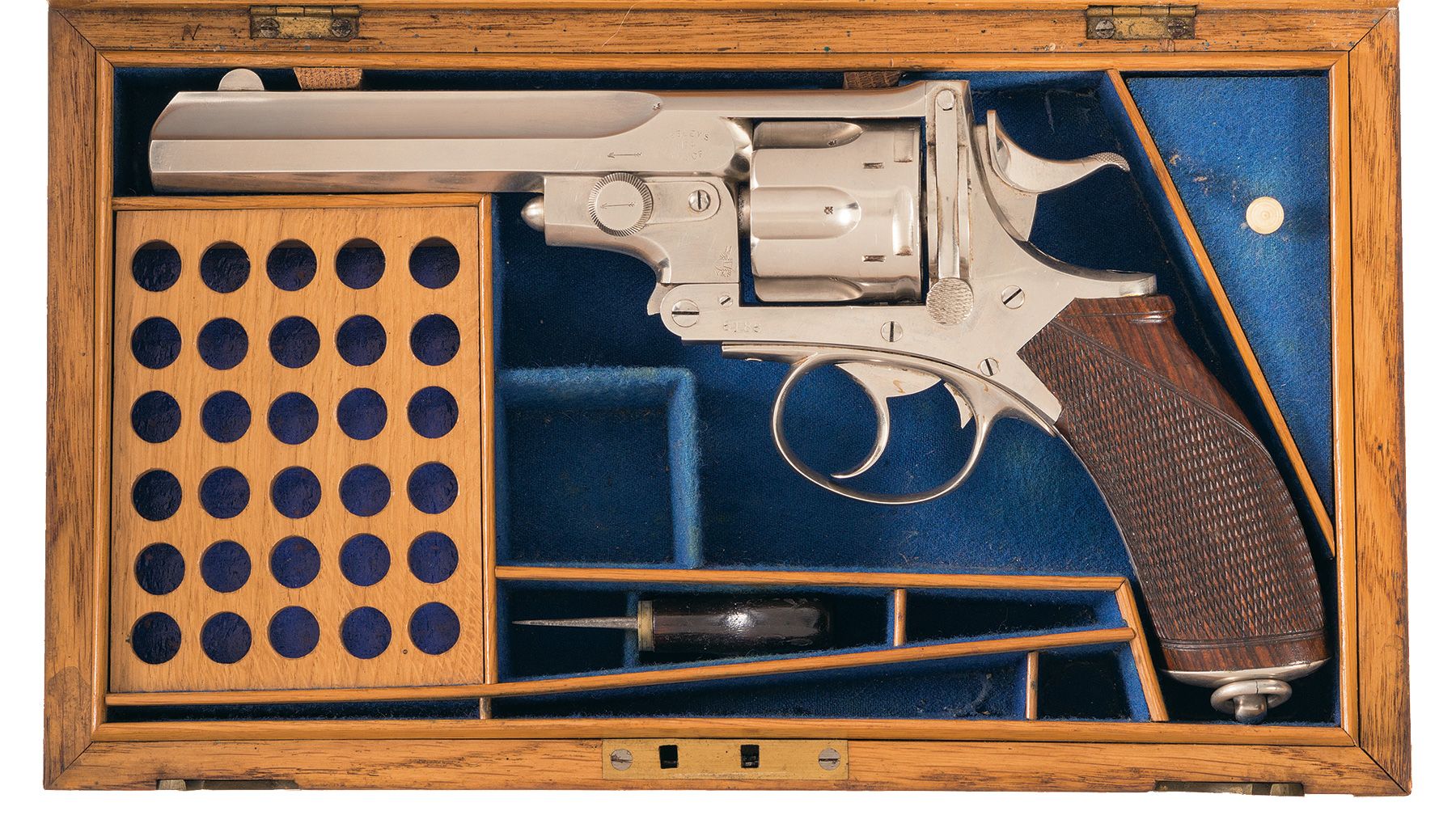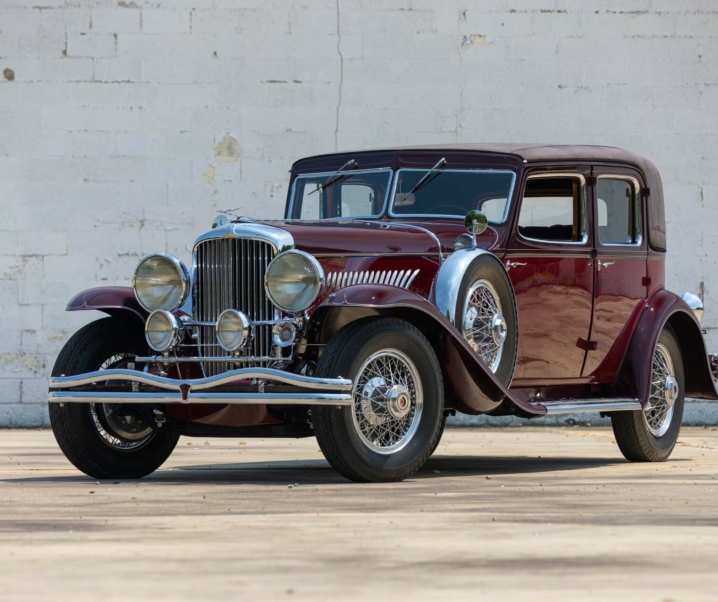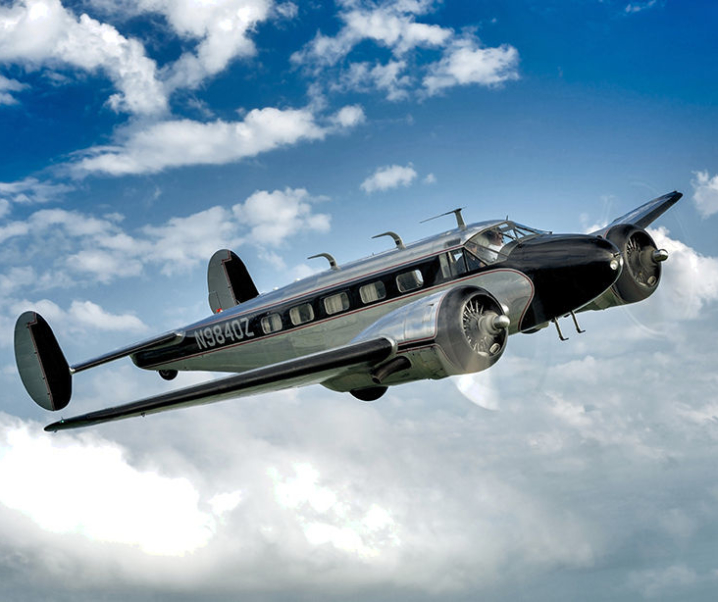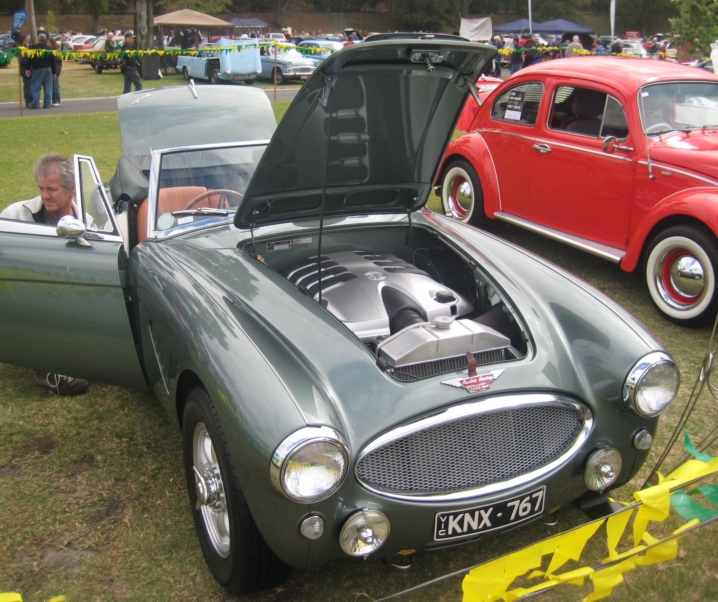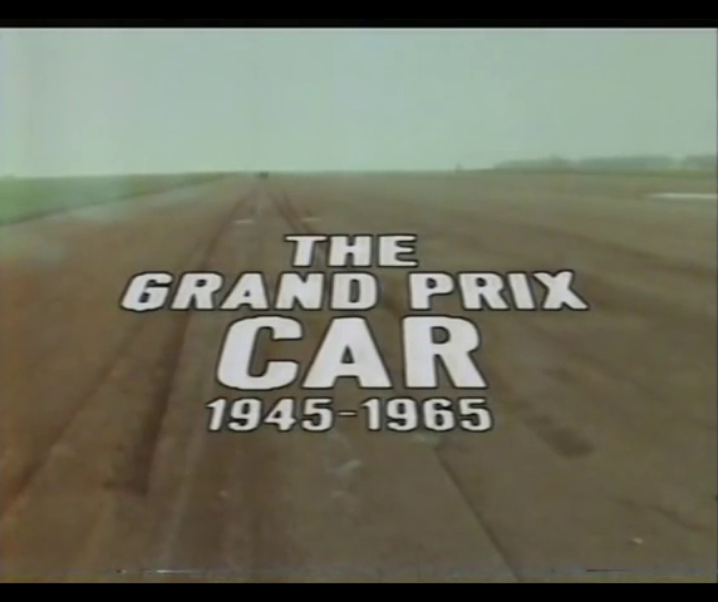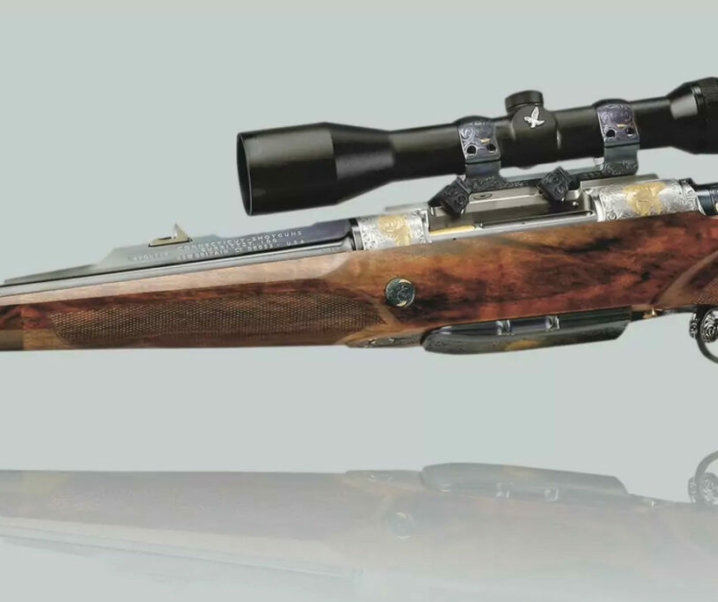The Colonial British and Americans took a somewhat different approach to revolvers. For Americans the Colt Single Action Army of 1873 was by and large the standard although the single action Smith & Wesson No. 3 (and the Schofield) gained some traction. Colt made their double action revolver of 1877, but this proved to be unreliable, and so although favored by the likes of Billy the Kid it earned itself the nickname of “The gunsmith’s friend” and was not favored as a revolver you would stake your life on.
British maker Webley were quick to appreciate the advantages of the double-action and began making solid frame reliable double action revolvers in the 1860’s, notably the Webley RIC (Royal Irish Constabulary) which was adopted in 1868, and the Army Express models which date from the late 1860’s and 1870’s. These revolvers earned themselves a good reputation, but despite their being double action, they were solid frame revolvers with a fixed cylinder and just like the Colt Single Action Army, they had to be unloaded and reloaded one cartridge at a time. In his book “The Gun and its Development” W.W. Greener suggests that if six shots were not enough to dispel the emergency then the remaining time might be better spent than trying to hurriedly reload. Greener was probably suggesting prayer, although once a solid frame revolver was empty the prayer might have been accompanied by use of a saber in an attempt to survive the encounter: swords don’t run out of cartridges.
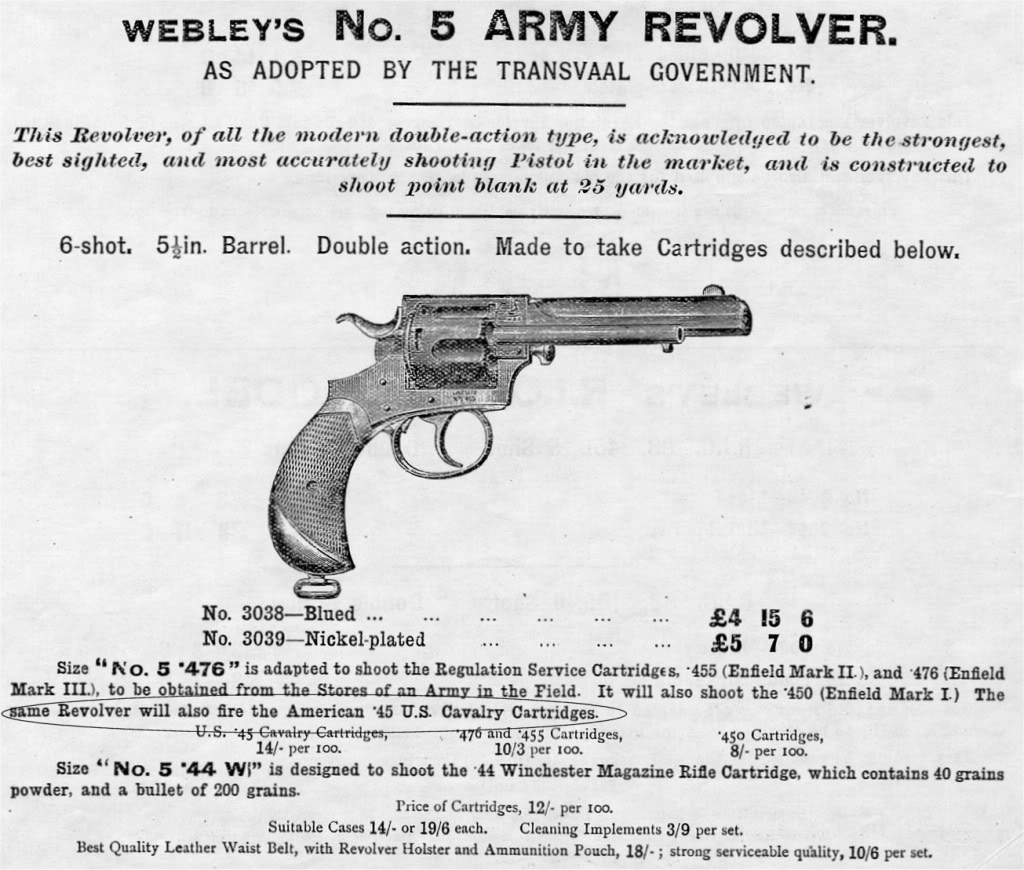
The British were however keen to solve the problem of reloading a revolver quickly and the obvious answer was to make the revolver open just like a double barrel shotgun or rifle. There were a number of mechanisms created, generally based on the same sort of locking principles as the double barreled gun, and one of the best of these was that of Charles Pryse “the Younger”, which he patented on 15th November 1876 with patent number 4421.
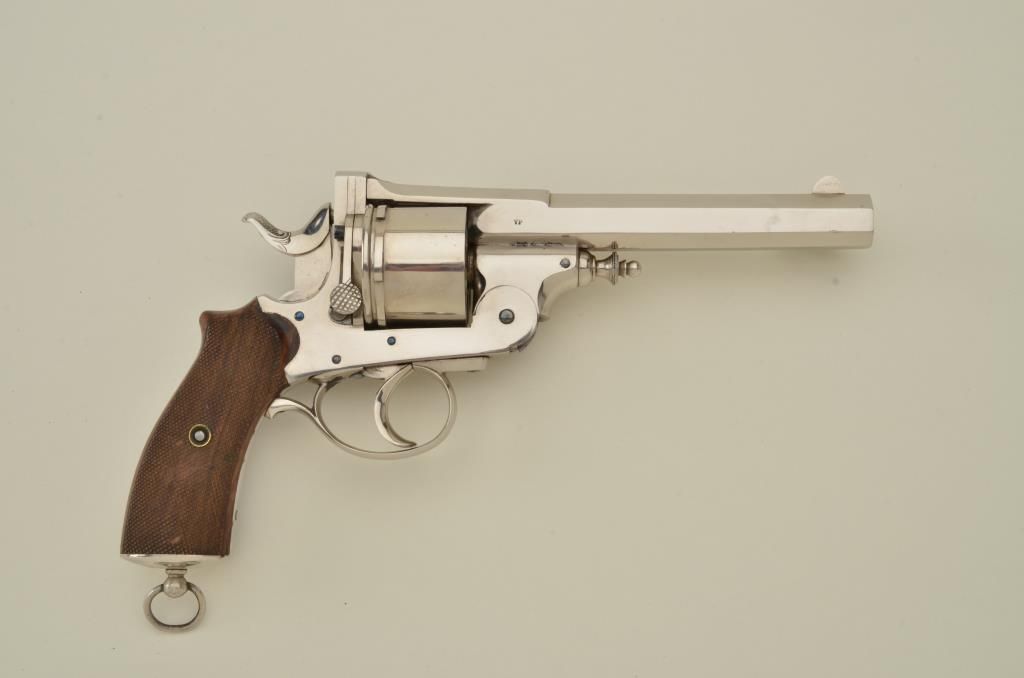
Charles Pryse patent system of opening the revolver so as to permit ejection of all fired cases in one action, and enabling more rapid reloading, was adopted by a number of gunmakers both in Britain and Belgium. The Pryse system had the barrel and cylinder hinged on the frame and attached at the top strap by two pins mounted on spring loaded levers. To open the revolver the correct way, the left hand reached over the top of the barrel and top strap to hold the revolver whilst the right hand thumb and forefinger depressed the levers on either side. This retracted the locking pins allowing the revolver frame and grip to be lowered and the spent cases ejected. If the revolver was opened this way the ejected cartridges would fall clear and not drop into the action. Once opened the revolver could be loaded with cartridges from the belt or bag.
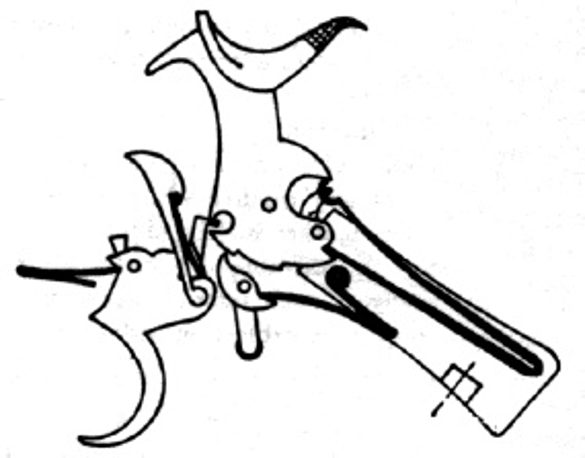
The Pryse patent was not limited to the opening and locking of the action but Charles Pryse is credited with the first rebounding hammer mechanism which was part of his 1876 patent.
There is a wealth of information on Webley revolvers in the book “The Webley Story” by W.C. Dowell, which you will find on Amazon if you click here.
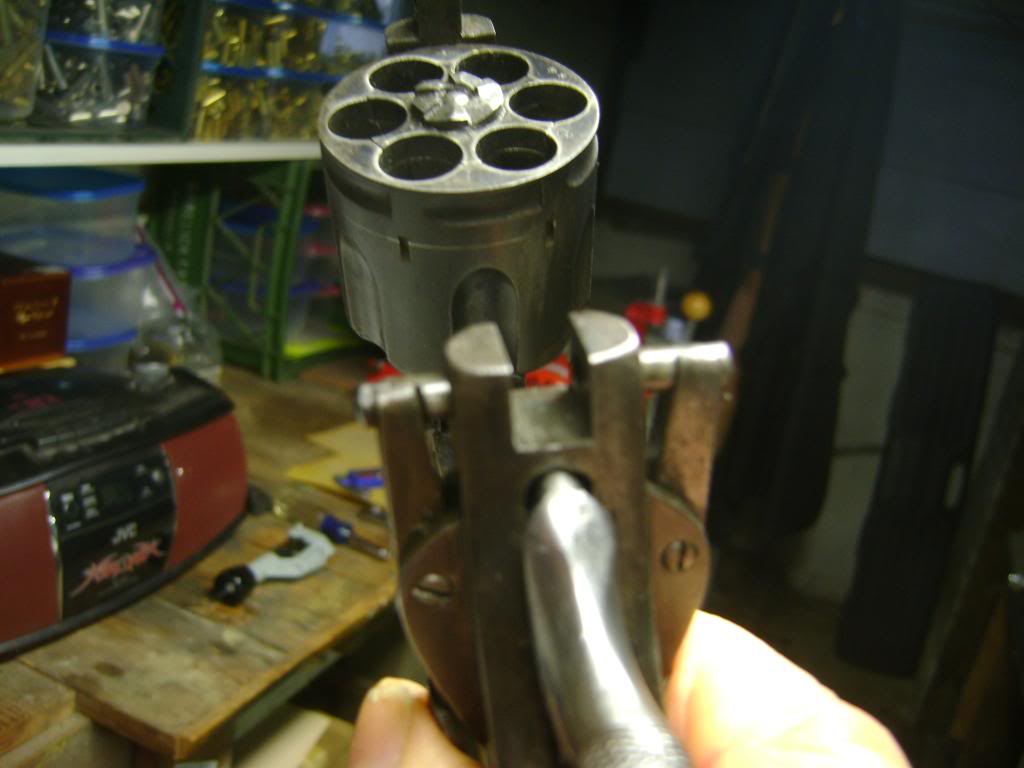
Pryse revolvers will be found bearing various maker’s names including Henry Wilkinson & Son (the famous sword maker), and John Rigby & Son (the famous sporting rifle maker and creators of the .416 Rigby cartridge). Despite the different brand names it is almost certain that most of the British made Pryse revolvers were actually made by Webley.

Webley made Webley-Pryse revolvers until they moved over to the more simple and reliable Edwinson Green “Stirrup Latch” type of top locking system which then became the standard for the rest of the life of the top-break Webley and Enfield revolvers of the First and Second World Wars.

Although superseded by the Edwinson Green Stirrup Latch system the Webley-Pryse revolvers were sturdy and reliable arms which saw service in both the First and Second World Wars, sometimes being handed down from father to son, and even to grandson.
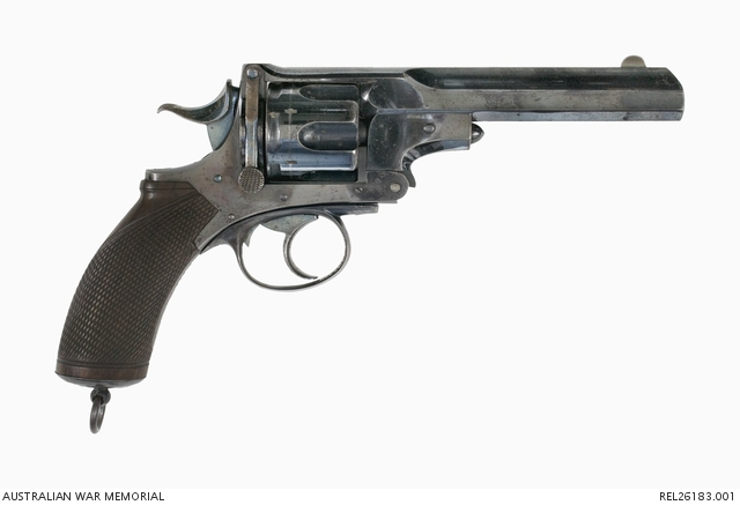
The Webley-Pryse No. 4 revolver is an important one to have in a collection of British revolvers especially if that collection is centered around Webleys. The Webley-Pryse No. 4 pictured below is a very nice and near pristine example of this fine revolver and it is coming up for sale by Rock Island Auction on September 7th, 2018.

The sale revolver is described by Rock Island Auction as follows:
Description
Condition

Jon Branch is the founder and senior editor of Revivaler and has written a significant number of articles for various publications including official Buying Guides for eBay, classic car articles for Hagerty, magazine articles for both the Australian Shooters Journal and the Australian Shooter, and he’s a long time contributor to Silodrome.
Jon has done radio, television, magazine and newspaper interviews on various issues, and has traveled extensively, having lived in Britain, Australia, China and Hong Kong. His travels have taken him to Indonesia, Israel, Italy, Japan and a number of other countries. He has studied the Japanese sword arts and has a long history of involvement in the shooting sports, which has included authoring submissions to government on various firearms related issues and assisting in the design and establishment of shooting ranges.

